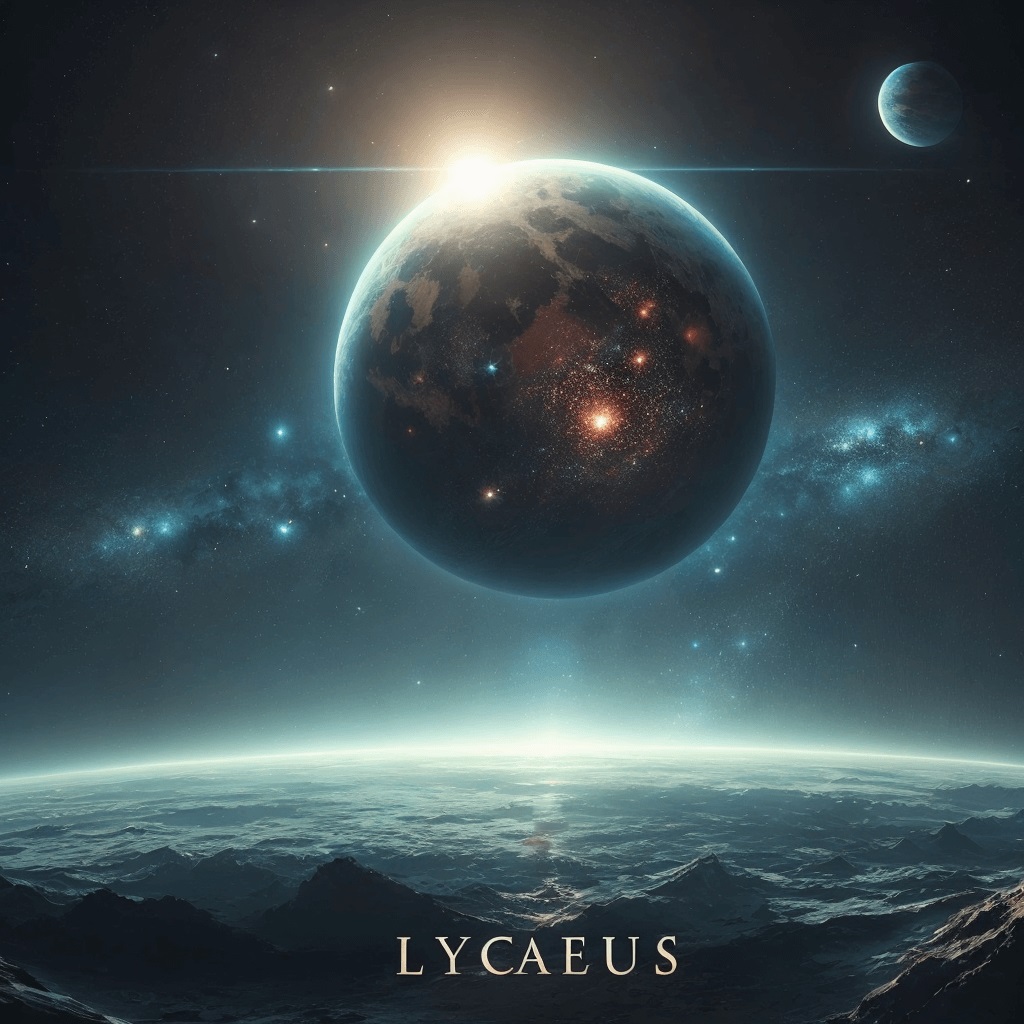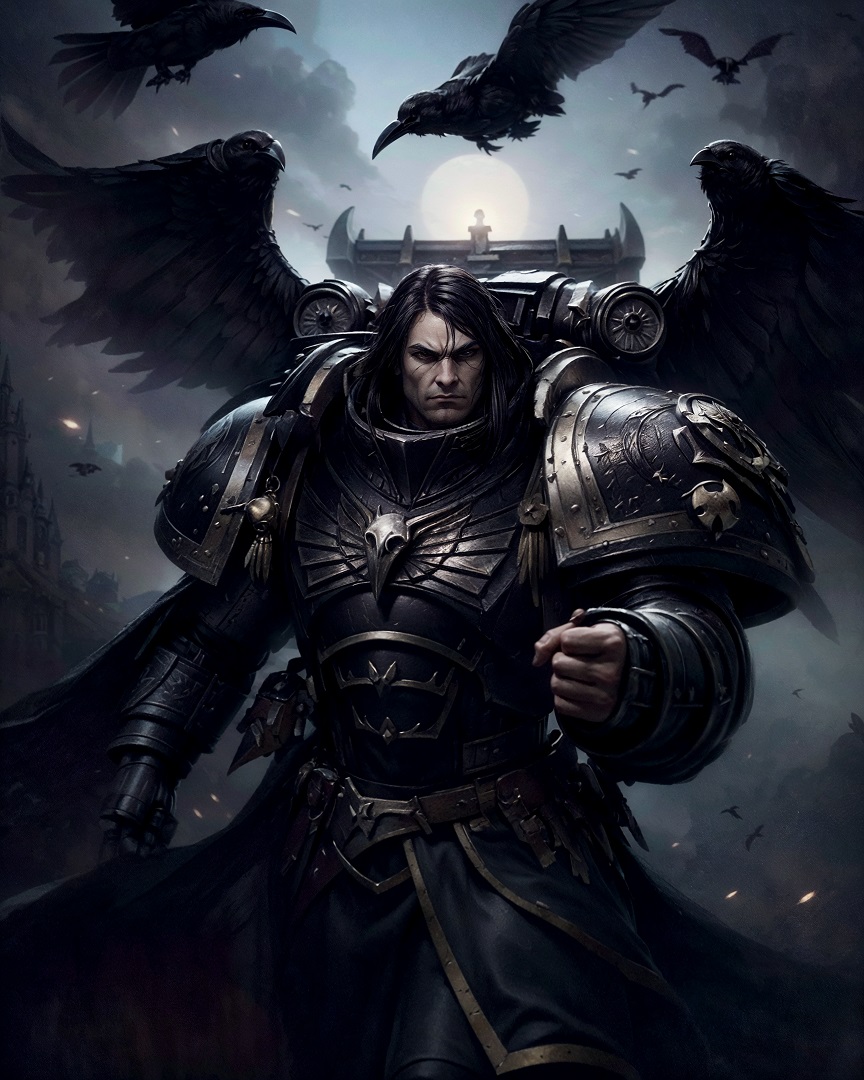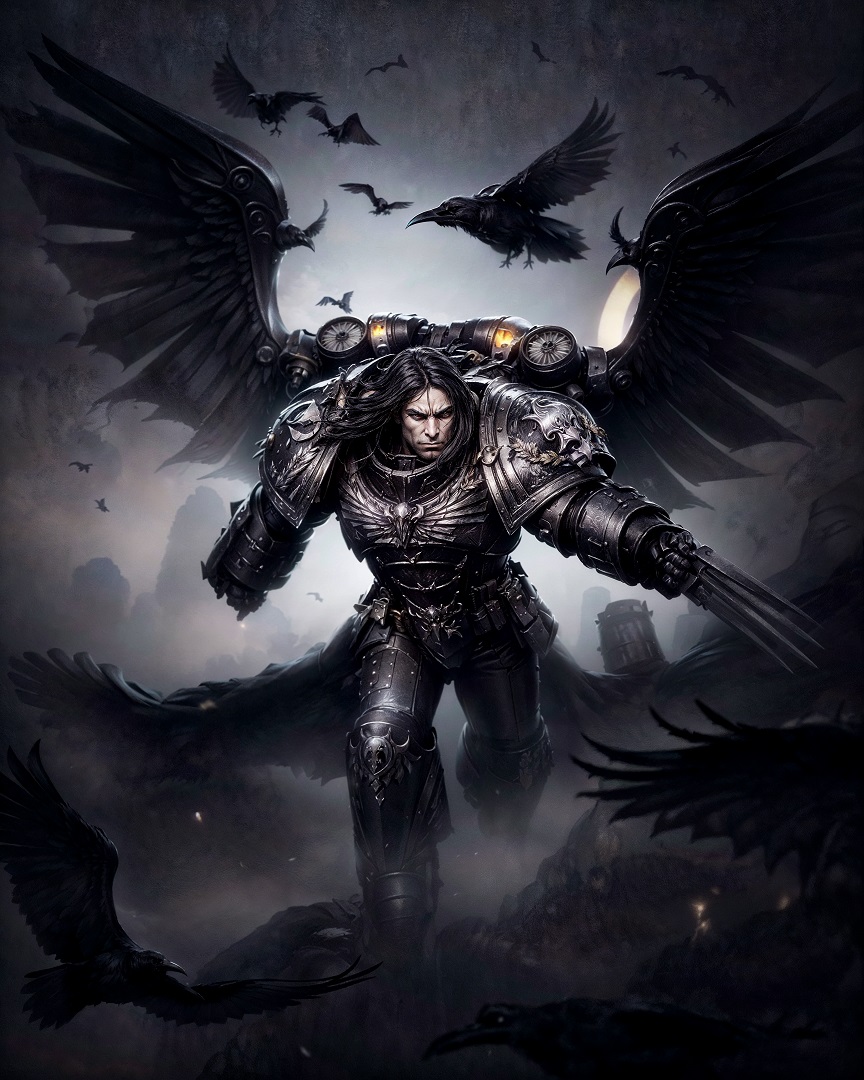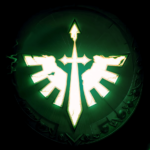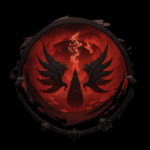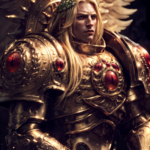Corvus Corax: Primarch of the Raven Guard and Shadowed Savior of the Imperium
Corvus Corax, known as “The Deliverer”, “The Liberator” and the “Shadowed Lord”, is one of the most enigmatic and illusive of the primarchs created by the Emperor of Mankind.
As the gene-father of the Raven Guard Legion, Corax’s talents for stealth, infiltration, sabotage and lightning warfare made his sons indispensable to the Great Crusade. But tragedy struck during the Horus Heresy and the legion was nearly destroyed, with Corax and his surviving sons forced to rebuild and seek vengeance on the traitors.
This is the story of the Raven Lord.
Key Takeaways:
- Enigmatic primarch of the Raven Guard known for stealth and guerrilla warfare
- Raised as a revolutionary on Lycaeus, leading slave uprising against oppressors
- Rebuilt devastated legion after Istvaan V betrayal using accelerated techniques
- Hunted traitor primarchs in Eye of Terror after Horus Heresy, seeking vengeance
- Disappeared into Warp, transformed into living shadows and darkness
Early Life and Uprising on Lycaeus
Like all the primarchs, the infant Corax was abducted through the Warp from the Emperor‘s gene-labs by the Ruinous Powers and scattered across the galaxy.
He came to rest on Lycaeus, the desolate moon of the forge world Kiavahr. Here, the enslaved population toiled in mines to extract precious minerals for Kiavahr’s tech-guilds.
When Corax was discovered by the slaves, they kept his existence secret from their overseers. They nurtured him and trained him in the skills of leadership, close-quarters combat, demolitions and guerrilla warfare.
With his prodigious growth and maturation, the slaves came to believe Corax was the prophesied savior who would deliver them from bondage.
As Corax grew to manhood, he began organizing the slaves into rebel cells, stockpiling weapons and training squads of fighters. Using sabotage, strikes and strategic hit-and-run attacks, Corax’s forces destabilized the power structure and spread panic and discord among the slave-masters.
Choosing his moment to strike, Corax led a coordinated mass uprising. Rebel teams stormed key points, wiping out the guard forces through superior tactics and brutality.
When Kiavahr’s rulers launched a counter-attack, Corax was ready. He lured their forces into ambushes, obliterating them piecemeal.
To seal his victory, the primarch smuggled atomic mining charges to Kiavahr’s five major cities and detonated them, decapitating the tech-guilds in one stroke. While thousands died, the moon and planet were delivered from tyranny.
The grateful population renamed Lycaeus “Deliverance” in Corax’s honor.
Notable Campaigns and Battles
Throughout the Great Crusade and Horus Heresy, Corvus Corax and his Raven Guard fought in numerous pivotal engagements. One early campaign was the Istvaan Compliance Action, where Corax argued strategy with Warmaster Horus.
The primarch advocated for precision strikes to minimize civilian casualties, but Horus overruled him, favoring overwhelming force. This foreshadowed their later falling out.
Another key battle was the grueling siege of Gate Forty-Two. Here, Perturabo’s Iron Warriors demanded a direct frontal assault, while Corax suggested infiltration and sabotage.
Perturabo’s plan won out, leading to catastrophic Raven Guard casualties. Corax afterwards swore to never serve alongside the Iron Warriors again.
Not all campaigns ended in disaster, however.
The two-year Scouring of the Scalland Sector saw the Raven Guard hone their skills in lightning raids against Eldar Corsair strongholds. The campaign also served as the proving ground for the first suits of Corvus pattern power armor, cementing the Raven Guard’s image as swift and lethal predators.
As the Horus Heresy raged, Corax found himself fighting alongside Leman Russ and the Space Wolves during the Battle of Yarant. The two primarchs formed an effective team, with the Raven Guard launching pinpoint strikes while the Wolves tore into the flanks of the traitors’ forces.
Though Yarant was ultimately devastated, the battle proved Corax’s resilience and determination to continue resisting Horus.
The Great Crusade and Horus Heresy
Not long after, the Emperor arrived to reunite with his son. After conferring for a day and night, Corax agreed to take command of the XIXth Legion which bore his genetic imprint, and the moon became the Legion’s headquarters and recruiting ground.
The Deliverance-born troops formed Corax’s inner circle within the Raven Guard.
During the Great Crusade, Corax frequently served under Warmaster Horus and the Raven Guard became renowned for their unmatched prowess in infiltration, subterfuge and rapid strikes.
However, tensions arose between Corax and some of his brother primarchs over methods and personality clashes.
In particular, Corax despised Konrad Curze, primarch of the Night Lords, for his use of terror tactics, which Corax saw as the tools of oppressors. Corax also distrusted many of the Terran-born Raven Guard, associating them with the Lycaeus overlords.
This all came to a head during the Horus Heresy. At the Drop Site Massacre on Istvaan V, Corax and his Legion were betrayed and nearly destroyed by the traitors
Corax himself was badly wounded in a duel with Lorgar of the Word Bearers, only escaping thanks to the interventions of the loyalist Iron Hands and Salamanders legions.
Raven Guard Rebuilt
With his legion in ruins, Corax rushed back to Terra to seek the Emperor’s aid. Unable to see his father directly, Corax experienced visions where the Emperor directed him to a secret lab where the primarch genetic templates were kept.
Using these to accelerate the development of new recruits, Corax and his Apothecaries set to work rebuilding the Legion.
However, the gene-seed was sabotaged by Alpha Legion operatives, and the new Astartes emerged as mutated monsters. Distraught, Corax terminated the project, though the twisted marines remained loyal and fought alongside their untainted battle-brothers.
Throughout the remainder of the Heresy, the surviving Raven Guard fought on defiantly, waging a guerrilla war against the Warmaster’s forces.
Laying ambushes and fomenting uprisings on rebel-held worlds, Corax’s sons bled the traitors in a series of campaigns, while the primarch himself is said to have duelled the traitor Angron as well.
Relationship with the Mechanicum
Corax and his Raven Guard always maintained close ties with the Adeptus Mechanicus, particularly the tech-priests of Kiavahr, the forge world that Deliverance orbits.
This relationship was forged during the Great Crusade, when the XIXth Legion brought Kiavahr into Imperial compliance through a combination of diplomacy and swift, surgical strikes that decapitated the world’s dissident leadership.
In the aftermath, Corax negotiated a pact with the Kiavahran priesthood. In return for arms, armor and materiel, the Raven Guard would receive right of tithe, allowing them to recruit from Kiavahr’s native populace.
This agreement bore fruit in the form of unique wargear optimized for the Raven Guard’s tactics, such as the stealthed Shadowhawk gunship and the open-frame Whispercutter assault craft.
Kiavahr soon became the Legion’s primary industrial center, even superseding Deliverance in some regards. The moon remained the Chapter’s spiritual heart, but for every ten aspirants raised there, thirty more were drawn from Kiavahr’s legions of menial workers. This mingling of martial and mechanical lineages created a hybrid culture, techno-barbaric in aspect.
During the Heresy, Kiavahr experienced its own civil war between loyalist and traitor Mechanicum factions. Corax devoted much of his efforts to securing the world, recognizing Kiavahr’s importance to the Raven Guard’s future.
In a ruthless purge, the primarch expelled the Dark Mechanicum, cementing Kiavahr’s allegiance to the Imperium, and to the Raven Guard.
The Vanishing
After the Emperor’s victory, the Raven Guard slowly rebuilt while Corax brooded on what he had done. Disgusted by the mutant marines, Corax granted them the Emperor’s Peace to their eternal souls before locking himself away in penance.
On the first anniversary of his isolation, Corax left his fortress, never to be seen again. Rumours persist that he made for the Eye of Terror, hunting the traitor primarchs, and that he has become a creature of shadow, striking at the enemies of the Emperor from the darkness.
This shadowed form is only appropriate, for in life Corax was always a master of stealth and misdirection, as befits the Raven Lord.
Powers and Wargear
The Sable Armour: Specially crafted power armor that blends with shadows and masks Corax’s energy signature.
Korvidine Pinions: Advanced, customized jump pack designed for the primarch’s personal use.
The Panoply of the Raven Lord: Set of master-crafted weapons including a Heavy Bolter, Archeotech pistols, the Raven’s Talons lightning claws, and a unique three-headed power whip.
Wraith-Slip: The innate psionic ability to meld with shadows, rendering Corax practically invisible until he strikes from the darkness. Post-Heresy, this developed into the ability to become one with darkness and shadow as a creature of the Warp.
FAQ
What happened to Corax after he disappeared?
His exact fate is unknown, but it seems Corax entered the Eye of Terror to hunt down the traitor primarchs. Rumors speak of a shadowy being, striking from darkness to slay the Imperium’s foes.
Did any of Corax’s mutated Raven Guard survive?
There are unconfirmed reports of twisted Astartes, fiercely devoted to the Emperor, fighting alongside the Raven Guard late in the Heresy. If any remained after Corax granted them the Emperor’s Peace is unknown.
How did Corax escape the Drop Site Massacre?
Though grievously wounded, Corax was able to escape thanks to a small Raven Guard fleet that arrived in the system, led by Commander Branne. The Raven Guard ships extracted the survivors and fled.
Why was Corax obsessed with stealth and guerrilla tactics?
This unique focus likely stemmed from Corax’s upbringing on Lycaeus, where he honed the skills of a rebel and insurgent fighting against the tech-guilds. He then imparted these methods to his Legion.
What was Corax’s relationship with his fellow primarchs?
Corax seemed to have a mixed relationship with many of his brothers. He served under Horus but tension existed between them. He despised Konrad Curze and the Night Lords for their brutal tactics. Ultimately, he remained more aloof and secretive than most primarchs.
Conclusion
Corvus Corax represents one of the most tragic tales of the primarchs. Raised to overthrow tyranny on Lycaeus, he sought to shape his Legion into a tool of justice and liberation, only to see his sons all but destroyed in Horus’ rebellion.
His attempts to rebuild the Legion left him guilt-ridden over the abominations he created.
But in the end, the Raven Lord stayed true to his nature, vanishing into the shadows to continue his war against the Emperor’s foes. Wherever darkness gathers, Corax is there, a stalker in the night, the claws of the Emperor striking from the blackness to rend corruption and treachery.
The Shadowhunter may be lost to the Warp, but his legacy lives on in the Raven Guard and its successors. The nineteenth primarch is truly the shadowed savior of the Imperium.
Interested in learning more? Head right on over to the Warhammer 40k Wiki


